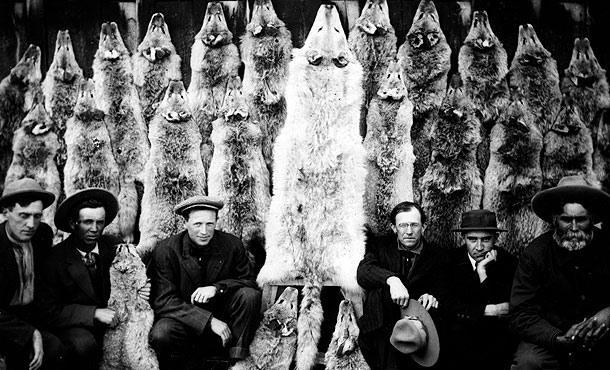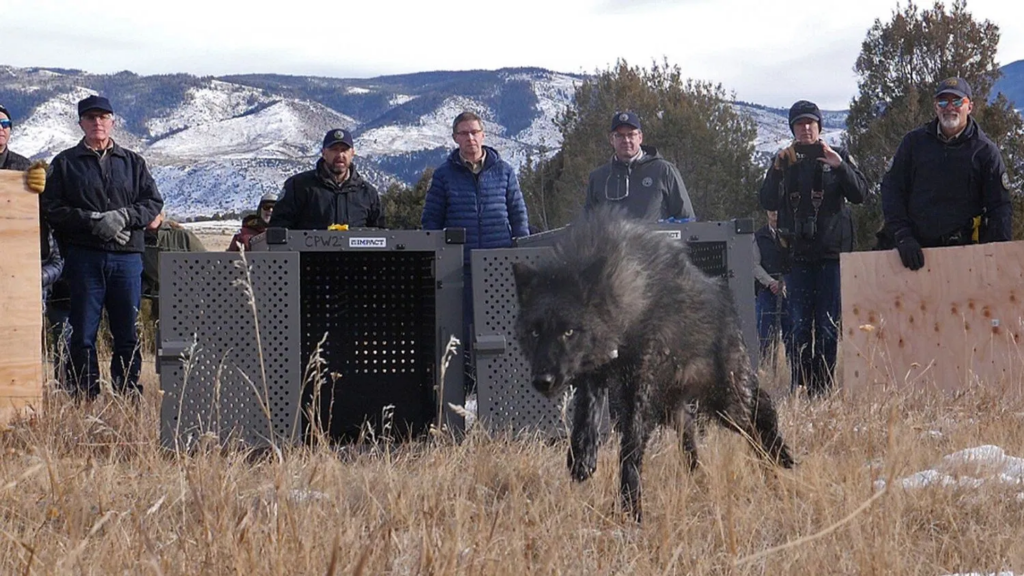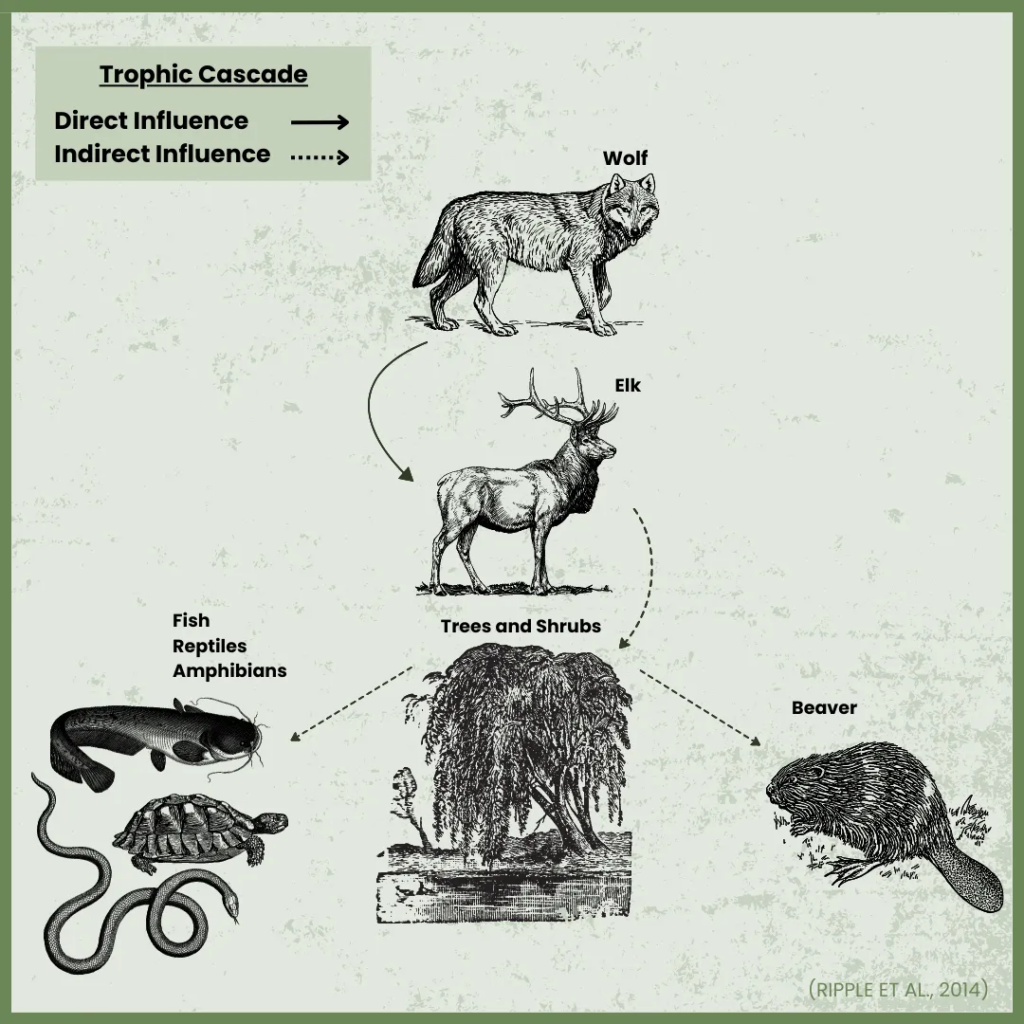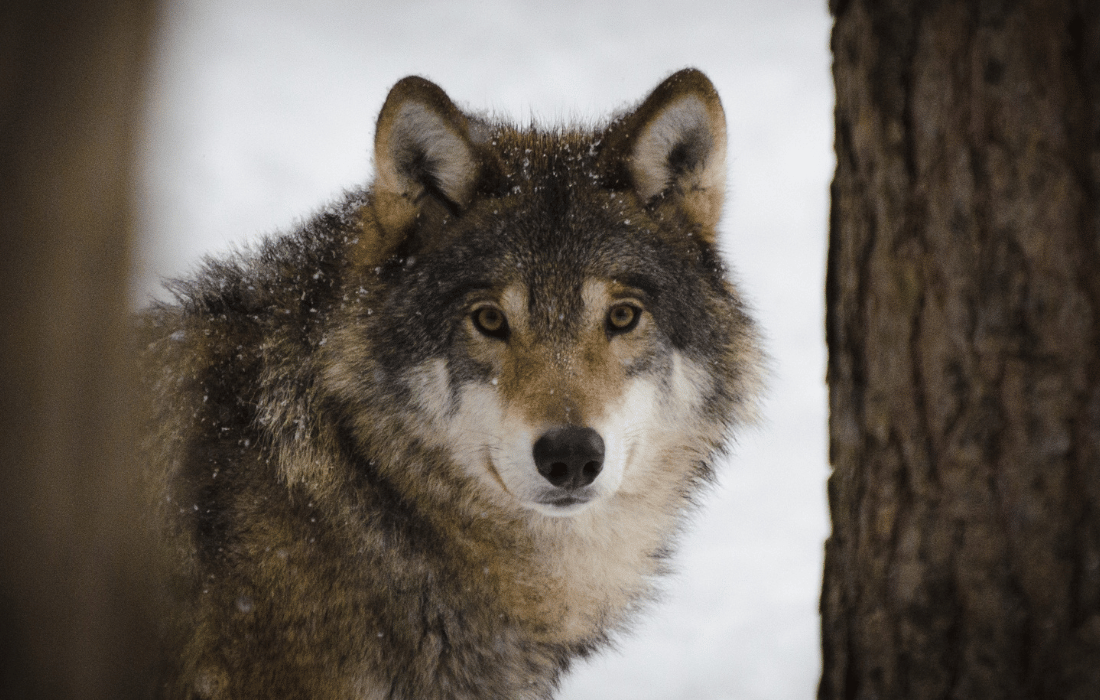The reintroduction of wolves in Colorado has sparked a heated debate that’s revealing a significant divide between urban and rural populations. This issue came to the forefront in November 2020 when Colorado voters narrowly approved Proposition 114, a ballot initiative to restore gray wolves to their former range within the state. The measure passed with a slim margin, highlighting the contrasting perspectives of urban and rural communities on this controversial topic.
Urban voters, often influenced by romanticized notions of wilderness and a desire to restore ecological balance, largely supported the initiative. They envision the reintroduction of wolves as a step toward a more natural and biodiverse Colorado, one where predators and prey coexist as they did in the past. This idealistic view is bolstered by successful reintroduction stories from places like Yellowstone National Park, where wolves have helped restore ecological balance by controlling overpopulated species like elk.
On the other hand, rural residents, who are more directly affected by the presence of wolves, predominantly voted against the initiative. For them, the reintroduction of wolves brings immediate concerns and risks. Livestock predation, threats to personal safety, and economic impacts on farming and ranching are just a few of the very real challenges they face. These communities, with their deep ties to the land and livelihoods dependent on agriculture, approach the issue from a perspective of caution and pragmatism.
This urban-rural divide is not unique to Colorado but is emblematic of broader trends in conservation and environmental policy. As cities grow and urban populations become more removed from direct interactions with wildlife, their support for conservation measures often contrasts sharply with the lived experiences of rural communities. Understanding this divide is crucial for developing policies that are both effective and equitable, ensuring that the voices of those most impacted are heard and respected.
In this blog post, we will explore the complexities of the wolf reintroduction debate in Colorado. We’ll look into the idealistic perspectives of urban voters and the practical concerns of rural communities, examining how these differing viewpoints shape the conversation around conservation. By highlighting the challenges and opportunities presented by this initiative, we aim to cultivate a deeper understanding of the need for balanced and inclusive environmental policies.
Background on Wolf Reintroduction
The history of gray wolf populations in Colorado is a tale of decline and resurgence. Gray wolves once roamed widely across North America, including Colorado, playing a key role in maintaining ecological balance. However, due to extensive hunting, habitat loss, and government-sponsored eradication programs in the early 20th century, wolves were virtually eliminated from the state by the 1940s.

In recent decades, there has been a growing movement to restore wolf populations in areas where they were previously rooted out. This movement gained significant momentum in Colorado, culminating in the passage of Proposition 114 in November 2020. The ballot initiative called for the reintroduction of gray wolves to their historical range in Colorado by the end of 2023. The measure passed by a narrow margin, with 50.9% of voters in favor and 49.1% opposed, reflecting a deep divide between urban and rural voters.
Demographic Breakdown

The voting patterns on Proposition 114 reveal a stark contrast between urban and rural areas. Urban counties, such as Denver and Boulder, showed strong support for the initiative, driven by voters who are often more distanced from the direct impacts of wolf reintroduction. These areas, with larger populations and more progressive attitudes towards environmental conservation, provided the majority of the “yes” votes.
Conversely, rural counties, where livelihoods are more closely tied to agriculture and livestock, predominantly opposed the measure. The practical concerns of these communities — potential livestock predation, threats to personal safety, and economic repercussions — led to overwhelming “no” votes in these regions. The opposition was particularly strong in counties adjacent to the proposed reintroduction areas, where the presence of wolves would be felt most acutely which happens to be where few voters live.
Study Findings
A comprehensive study conducted in the wake of the vote provides deeper insights into the factors influencing public support and opposition to wolf reintroduction. Using spatial linear regression models and precinct-level data, the study assessed the relationship between support for wolf restoration and several key factors:
- Presidential Vote: The strongest predictor of support for wolf reintroduction was political affiliation. There was a significant correlation between support for wolf restoration and votes for the Democratic candidate in the 2020 presidential election, reflecting broader political and ideological divides.
- Distance to Conservation Intervention: Proximity to the proposed reintroduction areas and existing wolf populations was inversely related to support for the initiative. The closer people lived to the areas where wolves would be reintroduced, the less likely they were to support the measure.
- Livelihood Factors: Increased age and participation in elk hunting were also associated with less support for wolf reintroduction. These factors highlight the concerns of rural residents who perceive wolves as a threat to their way of life and outdoor activities.
- Demographics: Demographic factors, including urban versus rural residence, played a significant role in shaping public opinion. Urban voters, with less direct exposure to the impacts of wolf presence, tended to support the initiative more strongly than their rural counterparts.

The study underscores the huge role of politicization in public conservation actions and highlights the need for outreach and engagement strategies to mitigate polarization. Policymakers need to understand these demographic and ideological divides to work towards more inclusive and balanced conservation policies that address the concerns of all stakeholders.
An Inherently Naive Perspective from Urban Residents
In the debate over wolf reintroduction in Colorado, urban voters’ support often stems from idealistic and romanticized views of wilderness and wildlife conservation. For many city dwellers, the idea of reintroducing wolves represents a return to a more pristine and natural state, a symbol of ecological restoration that aligns with other broader environmental values.
Idealistic Views
Urban voters frequently champion wolf reintroduction as a moral and ecological imperative. Influenced by documentaries, media portrayals, and conservation campaigns, they see wolves as majestic creatures that play a crucial role in maintaining healthy ecosystems. The success story of wolf reintroduction in Yellowstone National Park is often cited as a prime example, where the presence of wolves has led to numerous ecological benefits, including the reduction of overgrazed vegetation and the restoration of riverbank habitats.
These views are bolstered by a general trend towards environmental awareness and sustainability among urban populations. Many urban voters are understandably motivated by a desire to combat biodiversity loss and support wildlife conservation efforts, often viewing these issues through a lens of global environmental responsibility.
Disconnect from Reality

However, this urban idealism can sometimes translate into a disconnect from the practical realities that rural communities face. Urban voters, who are largely removed from the daily challenges of living alongside large predators, may not fully grasp the complexities and potential downsides of wolf reintroduction. Their support is often rooted in abstract principles rather than direct experience with the impacts of wolves.
For instance, while urban residents may view wolf reintroduction as a step towards ecological balance, they may not consider the economic and safety concerns of rural residents who live in close proximity to the proposed reintroduction areas. These concerns include potential livestock predation, threats to pets, and the safety of children, all of which can have significant personal and financial repercussions for those directly affected.
What The Research Shows Us
The study on the Colorado wolf reintroduction vote highlights this urban-rural divide. It found a strong correlation between support for wolf restoration and votes for the Democratic candidate in the 2020 presidential election, suggesting that political ideology plays a significant role in shaping views on environmental issues. Urban areas, which tend to lean more Democratic and progressive, showed higher levels of support for the initiative.

This politicization of conservation efforts reveals the need for more nuanced and inclusive approaches to environmental policymaking. It is essential to bridge the gap between urban idealism and rural realities by building greater understanding and empathy between these communities. By doing so, conservation policies can be developed that respect and address the concerns of everyone involved, ensuring that efforts to restore wildlife are both effective and fair.
Rural Realities: The Practical Concerns
While urban voters often support wolf reintroduction based on idealistic views, rural communities face the practical implications of living alongside these apex predators. For these residents, the reintroduction of wolves is not an abstract concept but a looming reality that affects their daily lives.
Impact on Livelihoods
Rural communities, particularly those involved in agriculture and livestock farming, have significant concerns about the reintroduction of wolves. Livestock predation is one of the most pressing issues. Wolves are natural predators and will readily hunt livestock like cattle and sheep, leading to substantial economic losses for farmers and ranchers. These losses are not only financial but also psychologically distressing, as livestock often represent years of breeding and investment.
Economic stability in rural areas heavily relies on agriculture, and any threat to this primary source of income can have cascading effects throughout the entire community. The potential for increased livestock predation means that farmers and ranchers may need to invest in additional protective measures, such as reinforced fencing or livestock guardian animals, which can be costly and labor-intensive.

Safety and Daily Life
Beyond economic concerns, the safety of rural residents and their pets is a major issue. Wolves are beautiful and majestic creatures, but they are also ruthless predators, and their presence can increase both the perceived and real risk of attacks on pets and even humans. For families with children, the fear of encountering wolves can affect daily activities, such as allowing children to play outside or walking pets, and for good reason.
Rural residents also have to consider the impact on their hunting activities. The study found that participation in elk hunting was associated with less support for wolf reintroduction. Hunters are concerned that wolves, by preying on elk, deer, and other game species, could reduce the availability of these animals, thereby affecting hunting opportunities and local traditions.
Community Voices

The often missed voices of rural residents are critical to understanding the full impact of wolf reintroduction. Testimonials from these communities often highlight the deep connection they have with their land and the challenges they foresee with the return of wolves.
For example, a rancher in western Colorado expressed his fears about losing livestock to wolf predation, pointing out that compensation programs, while helpful, do not fully cover the financial and emotional costs of such losses. Similarly, a family in a rural community near the proposed reintroduction area shared concerns about the safety of their children and pets, fearing that wolves could pose a danger close to their home.
Study Insights
The study on Colorado’s wolf reintroduction vote underscores these concerns. It found that support for wolf reintroduction decreased with proximity to the proposed reintroduction area, increased age, and participation in elk hunting. These findings highlight the practical considerations that weigh heavily on the minds of rural residents, who are more directly affected by the presence of wolves.
Understanding these perspectives is crucial for developing balanced conservation policies. It is essential to acknowledge and address the legitimate concerns of rural communities to ensure that wildlife restoration efforts do not disproportionately impact those who live closest to the reintroduced species.
Ecological and Environmental Health Implications
While the reintroduction of wolves in Colorado presents practical challenges for rural communities, it also offers significant ecological and environmental health benefits. Understanding these benefits is essential for a comprehensive view of the debate, as it broadens the view of the net impacts on ecosystems and biodiversity.
Benefits of Wolf Reintroduction
Wolves play a crucial role as apex predators in their ecosystems. Their presence can lead to numerous positive ecological changes, often referred to as trophic cascades. In areas where wolves have been reintroduced, such as Yellowstone National Park, these effects have been well-documented. Wolves help control populations of large herbivores like elk and deer, which can overgraze vegetation if left unchecked. This overgrazing can lead to a decline in plant diversity and negatively affect other species that rely on these plants for food and habitat.

For example, in Yellowstone, the reintroduction of wolves has led to a reduction in elk populations and changes in elk behavior, such as avoiding open areas where they are more vulnerable to predation. This shift has allowed willow and aspen trees to recover, providing better habitat for species like beavers and songbirds. Healthier vegetation along streams has also improved water quality and reduced erosion, benefiting aquatic species.
Balancing Perspectives
While the ecological benefits are significant, it is important to balance these gains with the practical concerns of rural residents. Effective wolf reintroduction programs must consider the socioeconomic impacts on communities and strive to mitigate conflicts between wolves and humans. This balanced approach can be achieved through several strategies:
- Compensation Programs: Offering financial compensation to farmers and ranchers for livestock losses due to wolf predation can help alleviate economic burdens. These programs need to be efficient, fair, and adequately funded to ensure they provide real support to affected communities.
- Protective Measures: Investing in preventive measures, such as enhanced fencing, guard animals, and other non-lethal deterrents, can reduce the likelihood of wolf-livestock conflicts. These measures can help foster coexistence by minimizing direct impacts on livestock.
- Community Engagement: Involving local communities in the planning and implementation of wolf reintroduction projects is crucial. Providing platforms for rural residents to voice their concerns and participate in decision-making processes can build trust and collaboration.
- Education and Outreach: Educating both urban and rural populations about the benefits and challenges of wolf reintroduction can promote understanding and empathy. Outreach programs can help dispel myths and provide accurate information about wolves and their ecological roles.
The reintroduction of wolves in Colorado holds the potential for significant ecological benefits, but it also requires careful consideration of the practical realities faced by rural communities. Balancing these perspectives is key to developing policies that promote both environmental health and social equity.
Final Thoughts
The reintroduction of wolves in Colorado is a complex and multifaceted issue that highlights the stark divide between urban idealism and rural realities. Urban voters, driven by romanticized views of wilderness and ecological restoration, have largely supported the initiative, envisioning a more natural and balanced ecosystem. However, for rural communities, the reintroduction of wolves brings tangible concerns related to livestock predation, economic stability, and personal safety.
The study on the Colorado wolf reintroduction vote provides valuable insights into these differing perspectives, showing how political affiliation, proximity to reintroduction areas, and livelihood factors influence public opinion. It underscores the need for policies that bridge the gap between these divergent views, promoting a balanced approach that respects the needs and concerns of all stakeholders.

The ecological and environmental health benefits of wolf reintroduction are significant, offering the potential for improved biodiversity and healthier ecosystems. Yet, these benefits must be weighed against the practical challenges faced by rural residents. Effective wolf reintroduction programs should include compensation for livestock losses, preventive measures to reduce conflicts, community engagement, and comprehensive education and outreach efforts.
By fostering a deeper understanding and empathy between urban and rural communities, policymakers can develop more inclusive and sustainable conservation strategies. This balanced approach ensures that wildlife restoration efforts do not disproportionately impact those who live closest to reintroduced species and that the voices of rural residents are heard and respected.
In conclusion, the urban-rural challenge in the Colorado wolf reintroduction debate highlights the importance of inclusive environmental policies that consider both idealistic and practical perspectives. By working together and addressing the legitimate concerns of all communities, we can achieve conservation goals that are equitable, effective, and reflective of the diverse values and experiences of Colorado’s residents.

Moving Forward
As we move forward, it is crucial to engage in open dialogue, participate in community discussions, and advocate for balanced policies that support both environmental health and the well-being of rural communities. Whether you are an urban conservationist or a rural resident, your voice matters in shaping a future where wildlife and humans coexist harmoniously. Let’s strive for solutions that honor both our natural heritage and the livelihoods of those who live closest to it.








